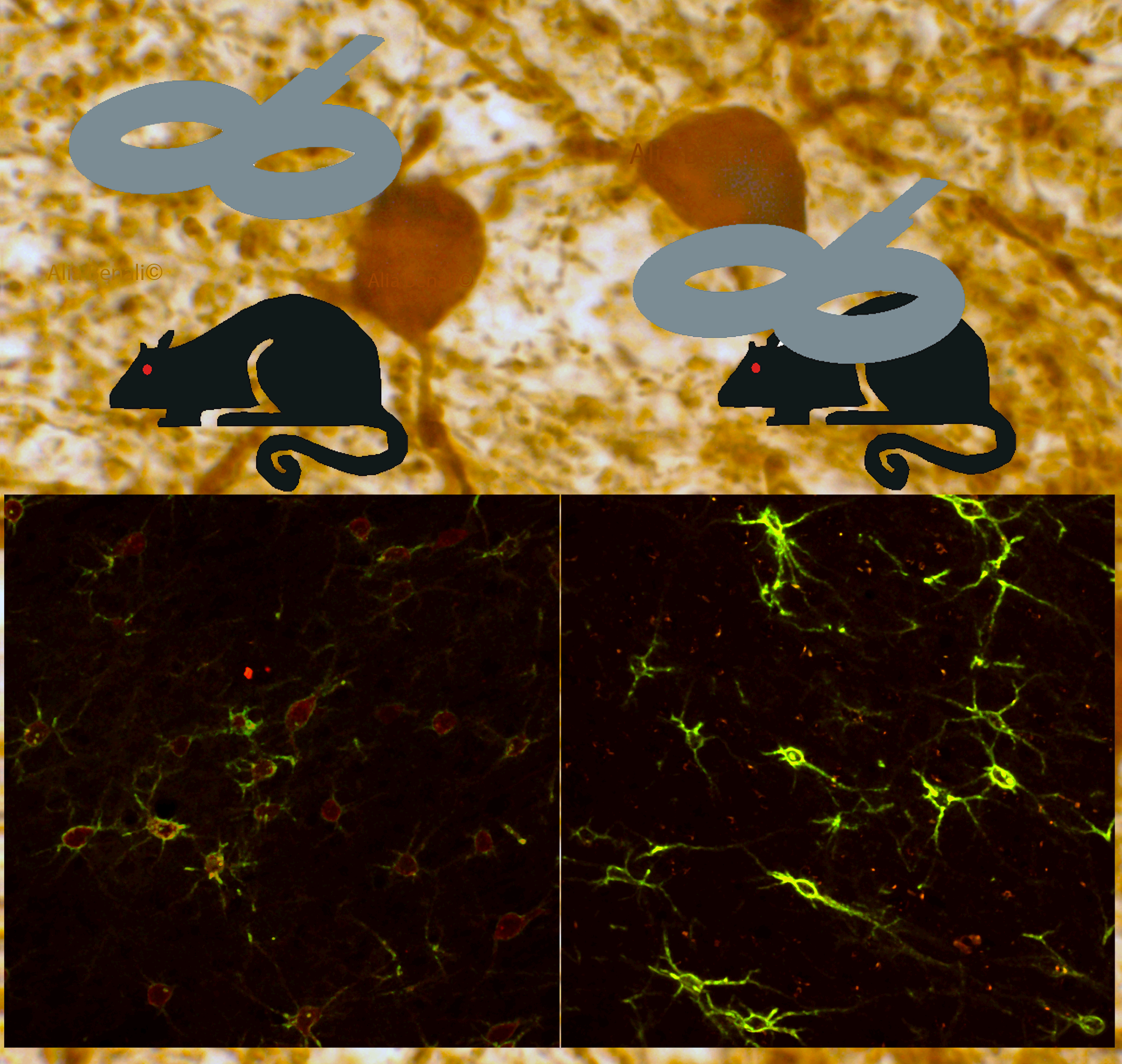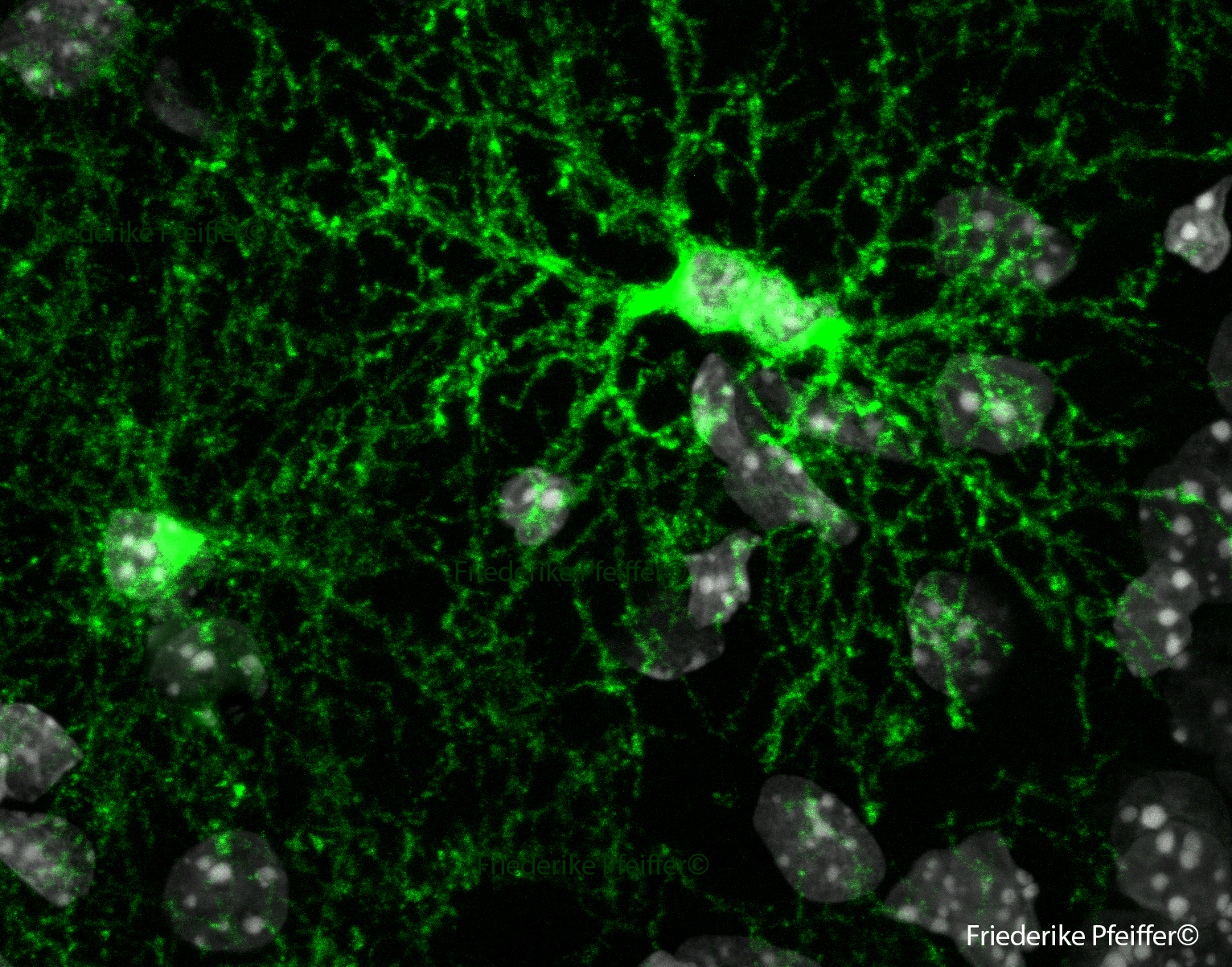Translation: Enhancing Myelination; Utilizing Brain Stimulation Methods

Description:
Myelination is a key biological process that is essential for the smooth functioning of the nervous system. This complicated mechanism involves the sheathing of neuronal axons with a special insulating layer known as the myelin sheath. In this way, myelination significantly accelerates the speed at which electrical impulses or action potentials travel along axons, thereby increasing the efficiency of neuronal communication between neurons. Myelin itself is a complex biochemical structure consisting mainly of lipids and proteins. Its formation is carried out by specialised types of glial cells - Schwann cells in the peripheral nervous system (PNS) and oligodendrocyte progenitor cells (OPCs) in the central nervous system (CNS). The myelination process begins during foetal development and goes through critical phases of expansion and refinement during early adulthood.
Within our research, we place a particular focus on the CNS. OPCs function as the cellular architects of the myelin sheath within this system. These cells envelop axons by expanding their cell membranes around them. Each additional layer of membrane added thickens the existing myelin sheath, culminating in a robust insulating barrier. In the CNS, it is noteworthy that a single OPC is capable of myelinating multiple segments of multiple axons, as shown in the figure below. The physiological benefits of myelination are many. One prominent benefit is the facilitation of saltatory excitation, a process in which electrical impulses "jump" from one gap in the myelin sheath to another - the so-called nodes of Ranvier - dramatically increasing the speed of signal transmission. In addition, the myelin sheath serves as a bioelectric insulator that minimises "skipping excitation" between neighbouring axons, thus preserving the accuracy of neuronal signals. The absence or breakdown of myelin can have devastating consequences, as demyelinating diseases such as multiple sclerosis (MS) in the CNS demonstrate. Affected individuals may experience a spectrum of neurological symptoms ranging from mild sensory disturbances such as tingling and numbness to debilitating motor impairments including paralysis. Given the immense impact of myelination on nervous system functionality, its understanding is essential not only for deciphering the complexity of neural circuits, but also for innovating therapeutic strategies. Our previous work has shown that neuronal activity is a key modulator of myelin plasticity (Nishiyama A, Serwanski DR, Pfeiffer F, 2021). Furthermore, we have shown that brain stimulation techniques such as transcranial magnetic stimulation (TMS) exert significant modulatory effects on neuronal activity (Funke & Benali, 2010). In particular, our research has shown that TMS leads to a downregulation of parvalbumin expression in inhibitory neurons (citation needed) and thus influences neuronal activation (Benali et al, 2011). Motivated by these findings, we are conducting a project that aims to analyse the complex relationships between TMS and myelination at the cellular level (Pfeiffer & Benali, 2020). Using advanced neurophysiological methods that we have developed in recent years (Li et al, 2017, Benali et al, 2021, 2023), we aim to explore how different TMS stimulation protocols influence the formation, maintenance and function of the myelin sheath.
In this project, our objective is to harness the potential of brain stimulation methods to improve the process of myelination in brain connections. By employing innovative techniques, we strive to enhance the formation and strengthening of myelin, which plays a crucial role in efficient neural communication. This collaborative project is conducted in partnership with Dr. Friederike Pfeiffer group.

Figure shows an oligodendrocyte precursor cells (OPCs) in the Mouse brain, that have numerous protrusions extend into the surrounding parenchyma and can myelinate multiple segments of multiple axons.
Literature:
Nishiyama A, Serwanski DR, Pfeiffer F. Many roles for oligodendrocyte precursor cells in physiology and pathology. Neuropathology 2021;41(3):161-73.
